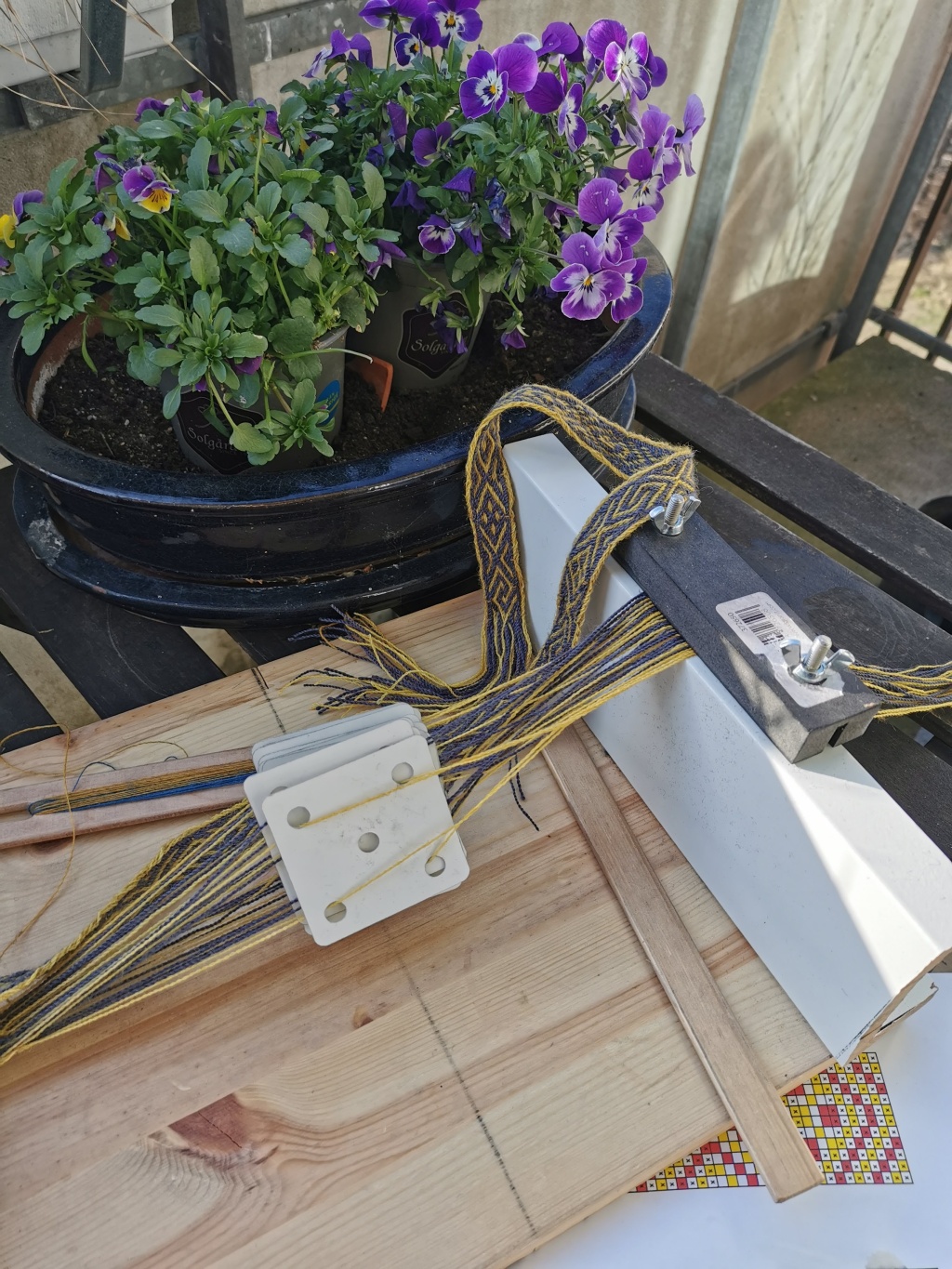Last summer a new chapter in my creative life started. Tablet weaving, I had barely heard of it before. And now it has become almost an obsession! It all started with my son asking if I would like to make a historical costume for him and his girlfriend. I have a slight suspicion he wanted me to be happily occupied during covid pandemic isolation, but never mind. The historical period he wanted the costumes to be from is the Merovingian era in Europe, which is around 500-700 ad. It is also called early medieval, but up here in Scandinavia we like to think of it as the pre-Viking era. In Sweden it is also called Vendel, the name of a village were finds from the period have been excavated. I started to learn about clothing, style, textile technique, etc. I learned that they made stunning beautiful wool fabrics at the time, called diamond twill or herringbone twill. We found a supplier where we could buy authentic wool and linen fabrics, http://www.wooltrade.cz and from them, we got this to start with:

Early in the project, I noticed that an important part of Merovingian costumes was decorative woven bands that lined garments. The bands were woven in a technique called tablet weaving. It was practised many hundred years during the iron age. Square-shaped tablets with four or five holes were threaded with threads in various colours and set up in a loom or the like. Through turning the tablets forward or backwards and passing a shuttle through the weft it was possible to create intriguing and beautiful patterns. Fragments of bands have been found in graves, often along with tablets and other weaving tools. This shows how important those belongings were.
During medieval age tablet weaving was replaced by other methods. But in this modern time, it is rediscovered and today a few but enthusiastic crafters are tablet weavers. From grave findings, patterns have been reconstructed and are available on the web. Many thanks to Randi Stoltz, whose website http://www.randistoltz.com has been a gem.
Well, it was obvious that I had to learn about tablet weaving. It has been one of the most challenging tasks I have experienced as a crafter. Maybe because I didn’t know much about weaving. Weaving is altogether technical and complicated and this is no exception. I don’t want to tire you with details of my struggle, just imagining me throwing away a big bundle of unsuccessful bands not long ago. I can mention it took some time to find yarn that is strong enough not to break from the frequent turning, and now my favourite supplier is http://www.spangmurs.se. I had to build a small loom, and learn how to thread the tablets, I had to learn how to read instructions and understand patterns.
In searching for Merovingian patterns, I came across the Snartemo bands. They are famous in the world of tablet weaving. Fragments of bands have been found in Snartemo in Norway, dated 600th-century ad. Again thanks to Randi Stoltz, who has reconstructed patterns in Snartemo style. The technique is different from later bands. During this time swasticas was a popular figure but is difficult to use now due to the nazi connection. Randi has therefore altered the patterns and removed the swastikas from some of the bands.
Here are some of my first attempts when I finally got it reasonably right.

Of course, the project included a lot of sewing and before that research about what kind of garments men and women wore and how they were sewn. The cutting was complicated with triangular gores, which made it possible to use all fabric without a waist. The most frequent stitch was the whip stitch which was the only stitch I used. I started with a simple sketch.
Ok, now I started to cut and sew a gown, shirt and trousers of linen, caftan, female dress and mantle of wool.
A ring broche was used to hold garments together, like this:

Now to the tablet weaving. The first band was for the caftan. First I coloured a sketch to see what It would look like and choose the right yarn:

Then followed two weeks of weaving. It was great fun!



The female dress completed with a mantle. I don’t know how many weeks it took to make it.




















Leave a comment